Scourge War Card Game
Composition
A Draconian Deck comprises 56 cards of 14 ranks in each of the four suits: Hoards, Hearts, Scales, and Claws. Each suit includes four court cards: Jack, Guardian, Queen, and King. Each suit also includes 10 numeral cards, from one (Ace) to ten. Each card displays the appropriate numeral in at least two corners, except "A" for the Ace, "J" for the Jack, "G" for the Guardian, "Q" for the Queen, and "K" for the King. The deck is also divided in half based on color. The Hoards and Hearts suits are red, while the , and Claws suits are black. The Guardian court card sits between the Jack and the Queen.[1] In addition, the 56-card deck also includes a pair of Ancients, with a small star and a dragon's head in at least two corners. The Ancients are often distinguishable from one another, with one being colored white or a simple black outline, while the other is colored full in black. They are respectively called the White Ancient and the Black Ancient. Alternatively, some decks may have red and black Ancient versions, corresponding with the red and black colors of the other cards in the deck. Some decks may contain a blue or gold Ancient instead. In most games, the ace is considered the highest-valued card. If the Ancient cards are used, they are considered the highest court cards and are even above the ace. Scourge War uses two 56-card decks in addition to a pair of Ancient cards — for a total of 114 cards, including the Ancients (112 without). Typically, one of the Ancient cards will always be the black variant, while the second Ancient card can be any one of the other variants.Execution
Battling
Each player draws two (2) cards from the top of their Units deck, laying them face-up, side by side on the battlefield. Players can choose to lay their cards from left to right or right to left. The column of cards that are directly across from each other is called a battle. Whoever has the highest card of that column, or battle, wins and takes those cards.Fighting the War
A war is declared when any opposing cards on the battlefield match. Cards that match those from the same side do not declare a war. When a war is declared, players will lay a Unit card face-down on the cards at war (ones that match), then another one face-up. Whoever has the highest card wins. If the opposing cards are again equal, then the battle repeats with another set of face-down/up cards. This repeats until one player's face-up card is higher than their opponent's. The winner will take the cards based on the positioning of the cards at war:If two opposing cards are again equal, the battle repeats with another set of face-down/up cards, only on the matching cards at war, even if another card in the initial war is of higher value. Whoever has the highest card wins and takes all the cards on the battlefield. If a war is declared and there are no more Unit cards to fight it, then the Legend cards are placed face-up on the field. Whoever has the higher card wins and takes all the cards on the battlefield, and the game is over. If the Legend cards match in value, both players draw another Legend card and immediately play it face-up. Whoever has the highest card wins and takes all the cards from the battlefield. Ancient cards are considered to be the highest. This is called the Final War or Final Battle.
Scourge War
When all cards on the battlefield match in some way, a Scourge War is declared. Instead of playing four battles, the Legend cards are used. There are several types of Scourge Wars, each with their own set of rules. Matching Paired Values (Scourge War)If the values of all cards on the battlefield match in pairs, either directly across or diagonally, it is known as a Scourge War. Both players will place their Legend card face-up onto the field. Whoever has the highest Legend card wins the Scourge War and takes all the cards on the battlefield. Ancient cards are considered to be the highest. If the Legend cards match in value, both players draw another Legend card and immediately play it face-up. Whoever has the highest card wins and takes all the cards from the battlefield. After the Scourge War has been fought, both players draw a Legend card and place it face-down in front of them, ready to be used in battle. The game continues on as normal. For example, a Scourge War is declared by:
If all the cards match in a suit (regardless of card values) or if all the values match (regardless of card suits), it is known as the Battle of the Scarsands Canyon or by the name of any significant battle, typically one that has ended a war. Players will place only one set of face-down/up Unit cards. If the face-up cards match (only in value), the battle is repeated with another set of face-down/up cards. Whoever has the highest card wins and takes all the cards on the battlefield. After the War has been fought, the Final Battle is played, regardless of how many Unit cards players have remaining. For example, Battle of the Scarsands Canyon happens with:
If all cards match in value and color (red or black), it is known as Scorched Earth. Additionally, if all cards match in a suit and values — if playing with four or more decks — then it will also cause Scorched Earth. For example, Scorched Earth is caused by:
Final War / Final Battle
When the players reach the Final Battle, either by running out of Unit cards to play or by the Battle of the Scarsands Canyon, they use their Legend cards. If a player has a mismatched amount of cards because of a 3-way war and has no Unit cards to play, the game goes into final battle, regardless of how many Unit cards the other player has left. Both players will place their Legend card onto the battlefield face-up. If the Legend cards match in value, both players draw another Legend card and immediately play it face-up. Whoever has the higher card wins and takes all the cards on the battlefield, and the game ends. Ancient cards are considered to be the highest.Game Over
When the game ends after the Final Battle, whichever player has the most captured cards is the winner. This does not include unused unit cards in the case of Battle of the Scarsands Canyon or a mismatch of cards because of a 3-way war. Additionally, the end of a game can come suddenly and unexpectedly, as in the case of Scorched Earth. When this happens, there are no winners, regardless of how many cards each player has captured. All players must return their cards to their respective decks, shuffle them, and begin a new game. Or rage quit.Battling
Each player draws one (1) card from the top of their Units deck, laying them face-up, side by side on the battlefield. Players can choose where to lay their card on their side, remembering which spot they have placed their card in. The column of cards that are directly across from each other is called a battle. Whoever has the highest card of that column, or battle, wins and takes those cards. It is vital to remember which battle your card is in.Fighting the War
A war is declared when any opposing cards on the battlefield match. Cards that match those from the same side do not declare a war. When a war is declared, players whose cards are at war will lay a Unit card face-down on those cards, then another one face-up. Whoever has the highest card wins that battle (column of cards). If the opposing cards are again equal, then the battle repeats with another set of face-down/up cards. This repeats until one player's face-up card is higher than their opponent's. The winner will take the cards based on the positioning of the cards at war:If two opposing cards are again equal, the battle repeats with another set of face-down/up cards, only on the matching cards at war, even if another card in the initial war is of higher value. Whoever has the highest card wins and takes all the cards of the columns that were at war. If a war is declared and no one has Unit cards to fight it, then the Legend cards are placed face-up on the field. Whoever has the higher card wins and takes all the cards on the battlefield, and the game ends. If the Legend cards match in value, players at war draw another Legend card and immediately play it face-up. Whoever has the highest card wins and takes all the cards from the battlefield. Ancient cards are considered to be the highest. This is called the Final War or Final Battle.
Scourge War
When all cards on the battlefield match in some way, a Scourge War is declared. Instead of playing four battles, the Legend cards are used. There are several types of Scourge Wars, each with their own set of rules. Matching Paired Values (Scourge War)If the values of four (4) cards on the battlefield match in pairs, either directly across or diagonally, it is known as a Scourge War. Players at war will place their Legend card face-up onto the field. If playing with six players, the other untouched third battle that does not match is not played. Whoever has the highest Legend card wins the Scourge War and takes all the cards on the battlefield. Ancient cards are considered to be the highest. If the Legend cards match in value, players at war will draw another Legend card and immediately play it face-up. Whoever has the highest card wins and takes all the cards from the battlefield. After the Scourge War has been fought, all players draw a Legend card and place it face-down in front of them, ready to be used in battle. The game continues on as normal. For example, a Scourge War is declared by:
If all the cards match in a suit (regardless of card values) or if all the values match (regardless of card suits), it is known as the Battle of the Scarsands Canyon or by the name of any significant battle, typically one that has ended a war. For example, Battle of the Scarsands Canyon happens with: In a four-player game:
If all cards match in value and color (red or black), it is known as Scorched Earth. Additionally, if all cards match in a suit and values — if playing with four or more decks — then it will also cause Scorched Earth. For example, Scorched Earth is caused by:

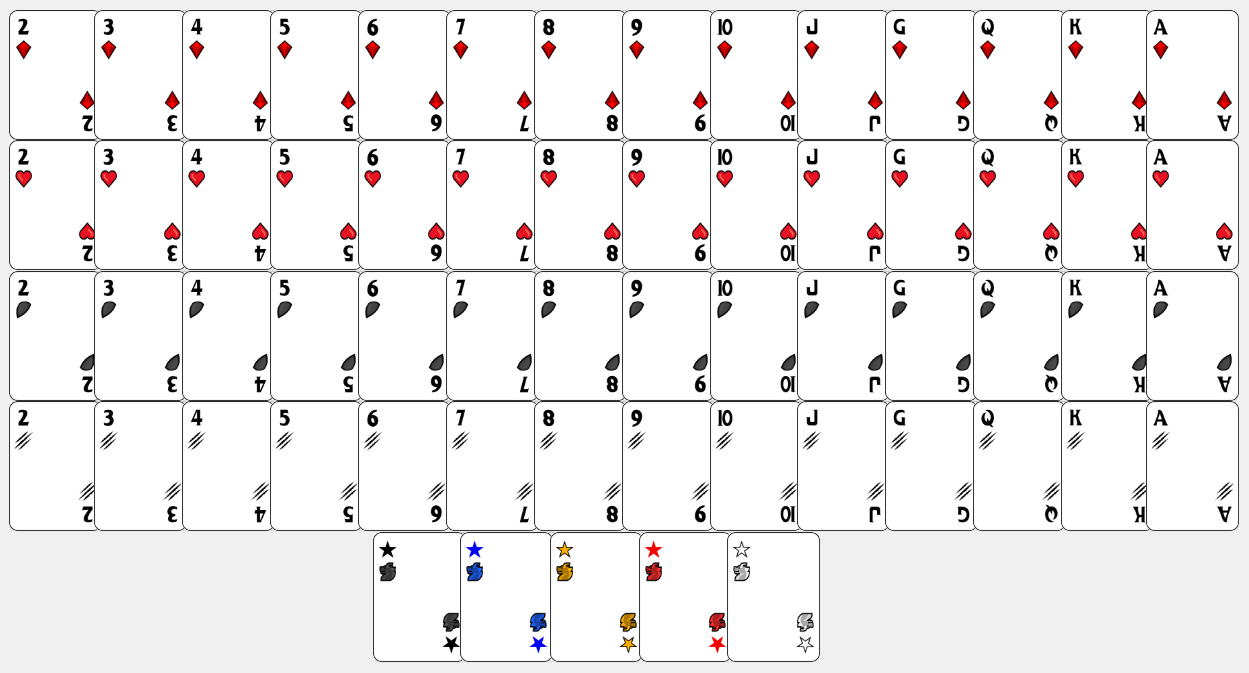
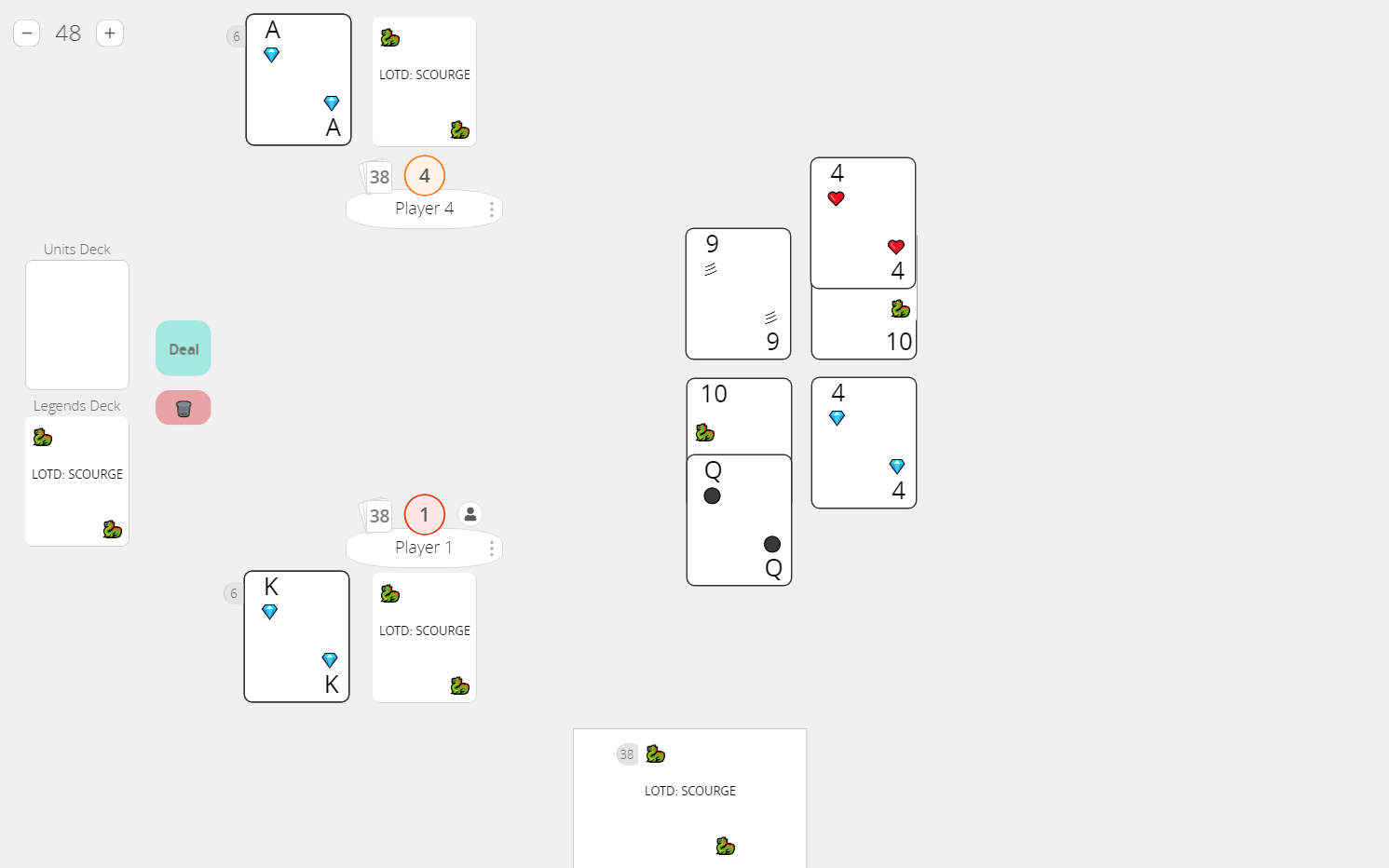
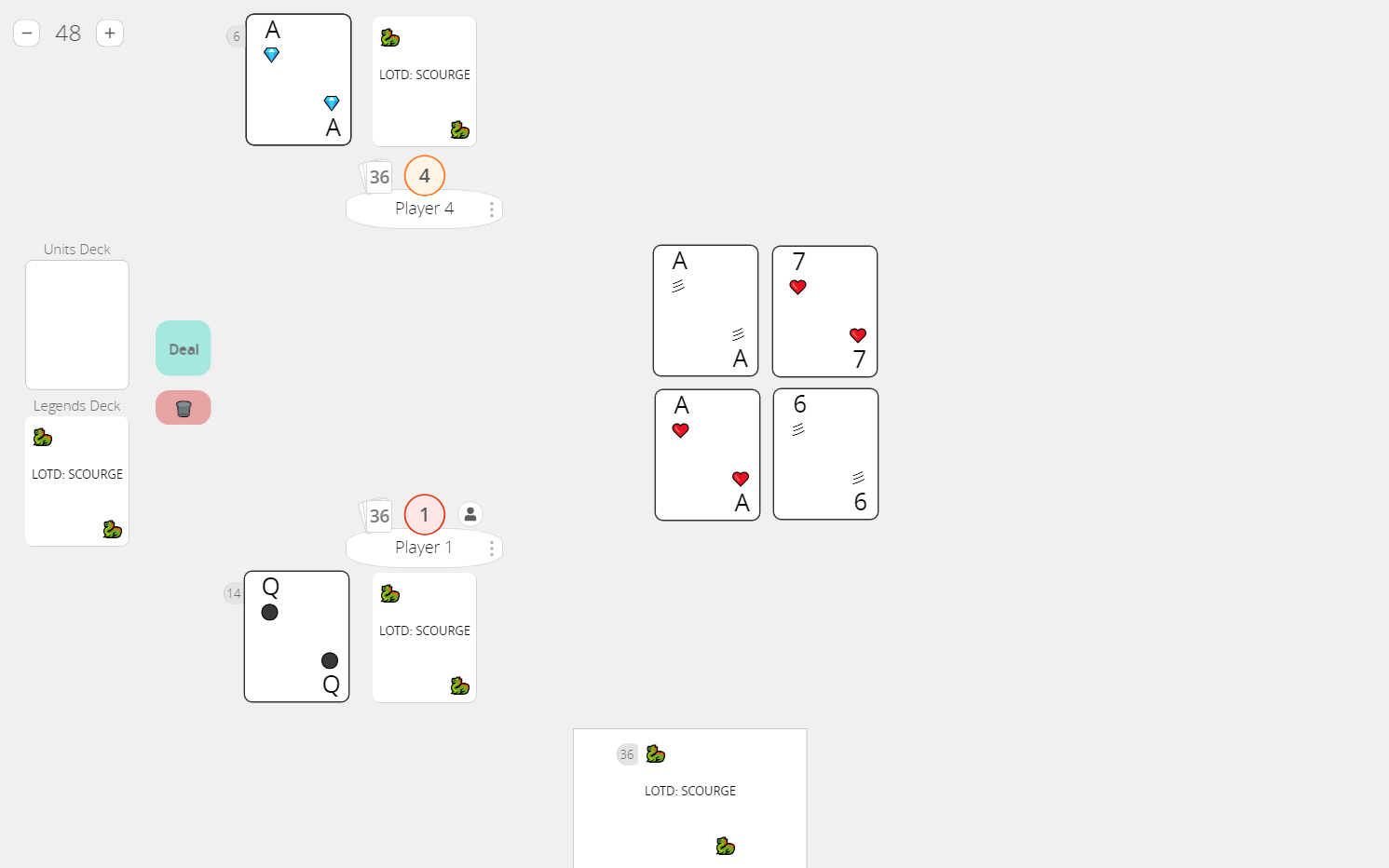

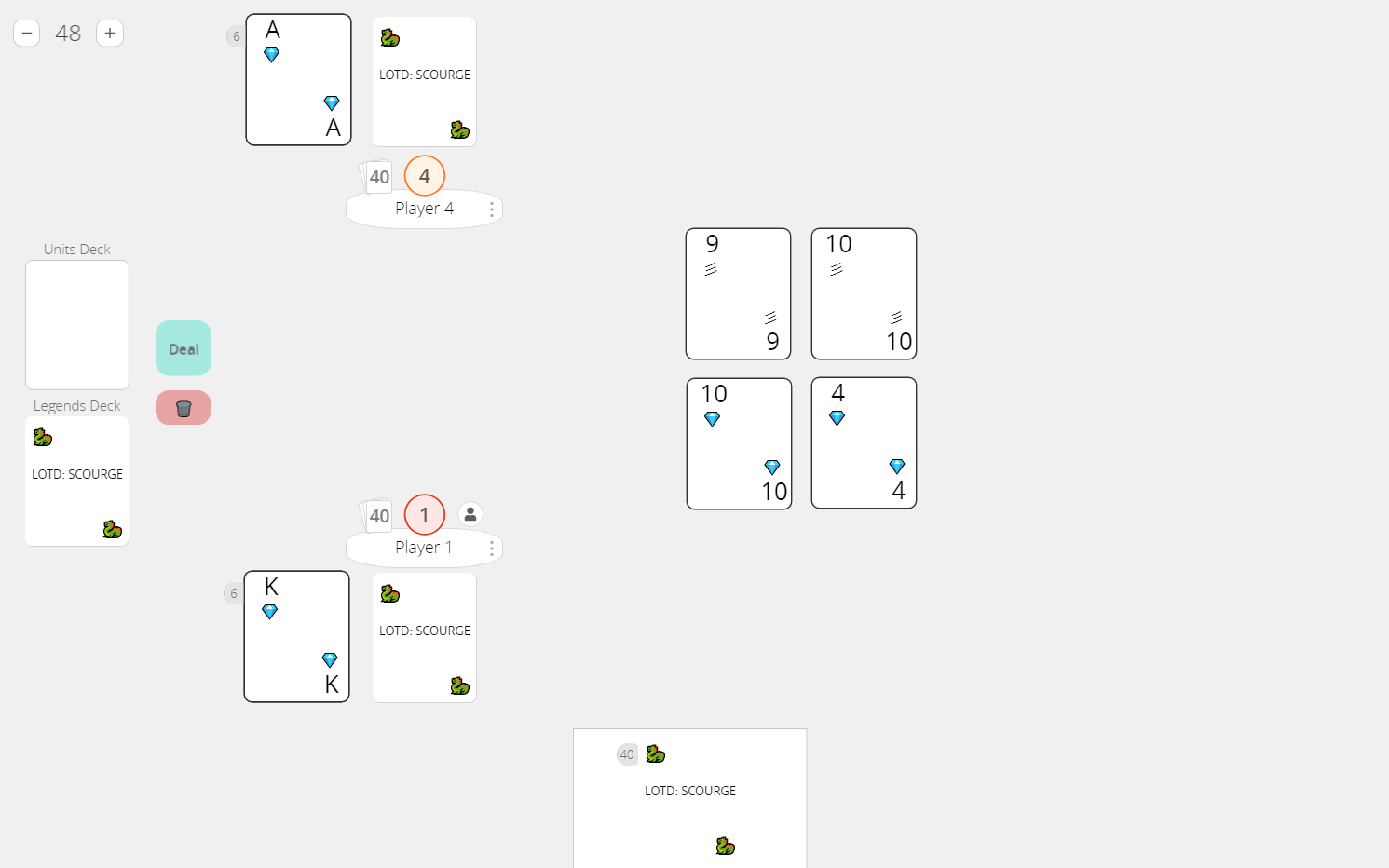
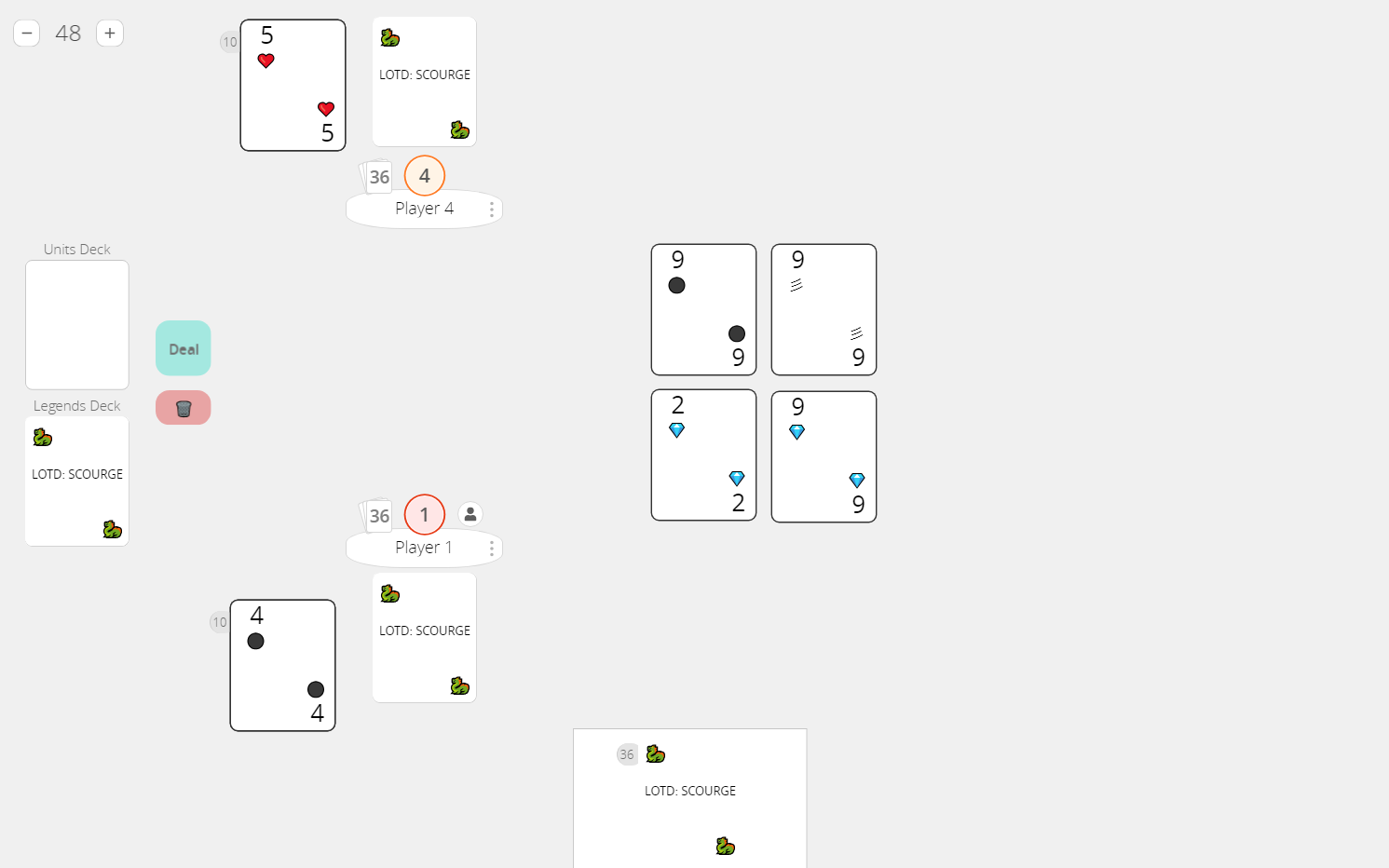
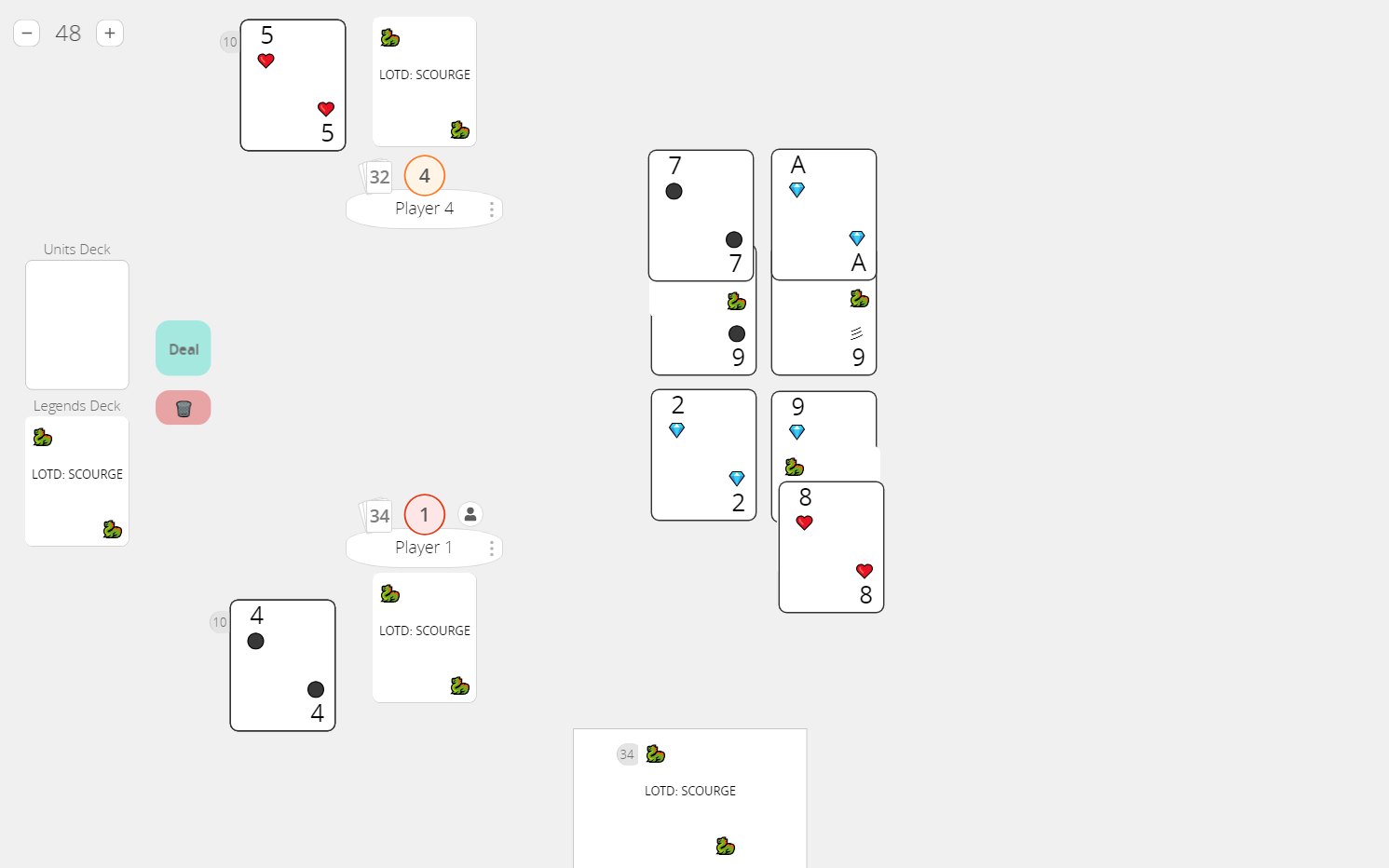
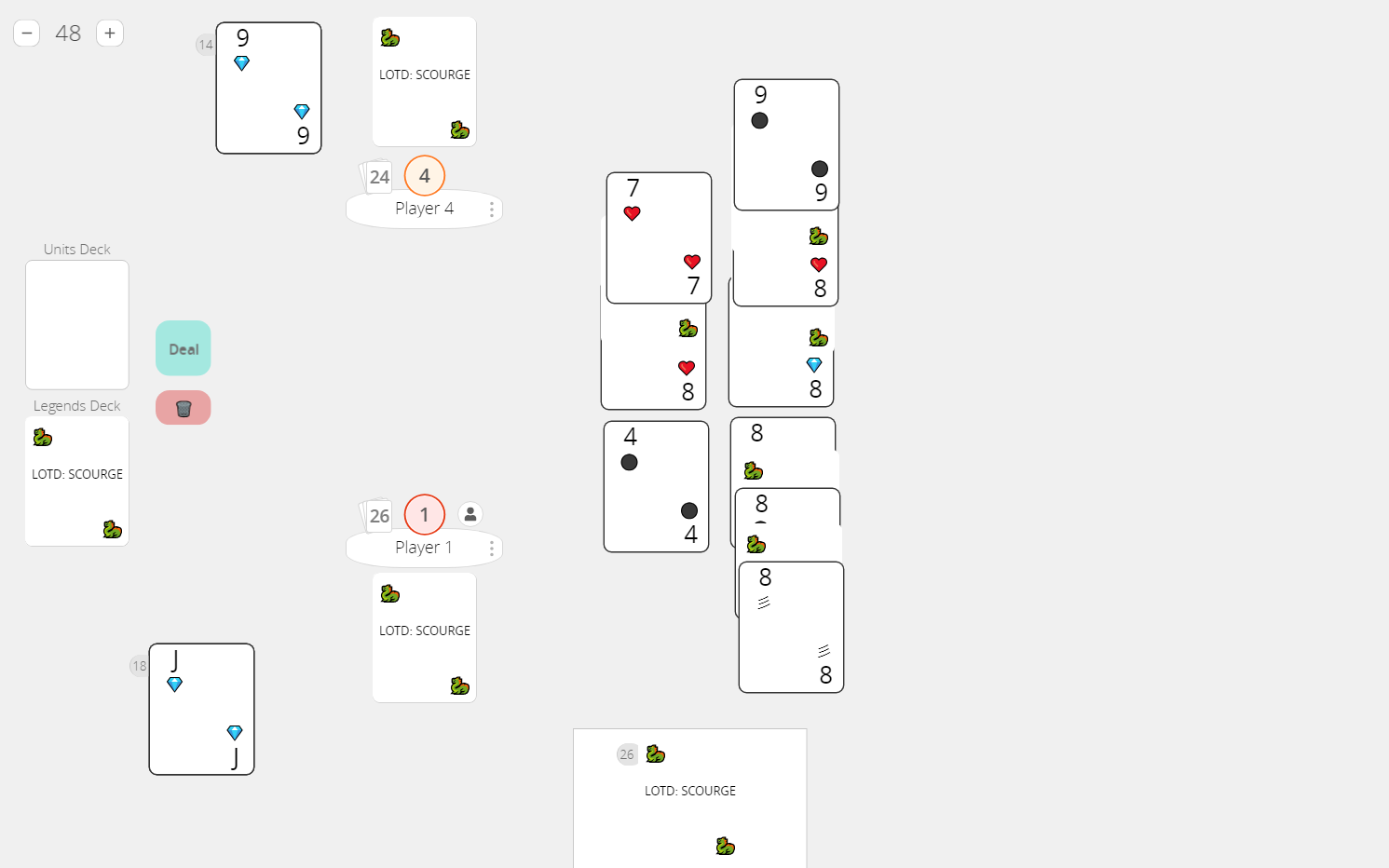
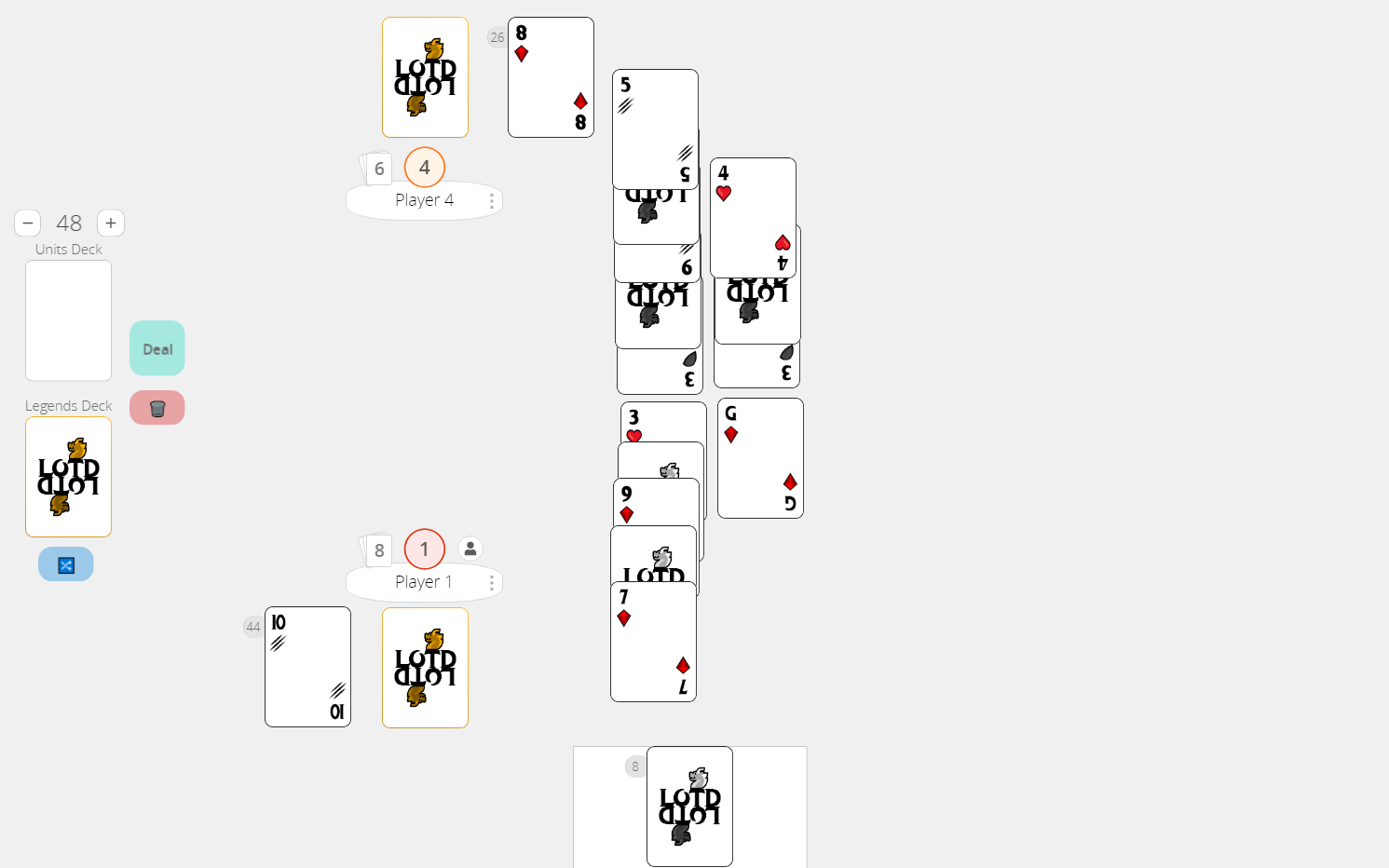
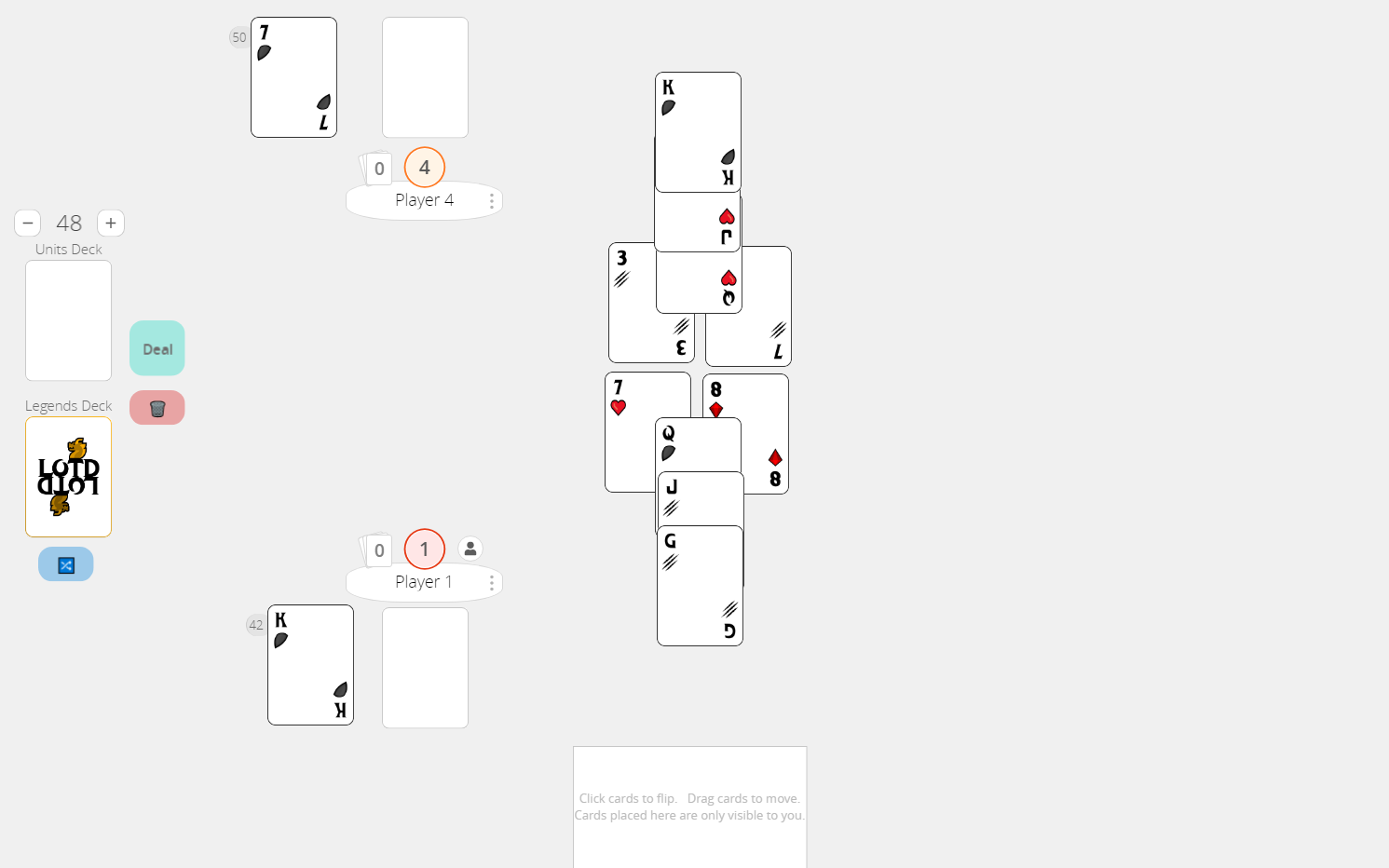
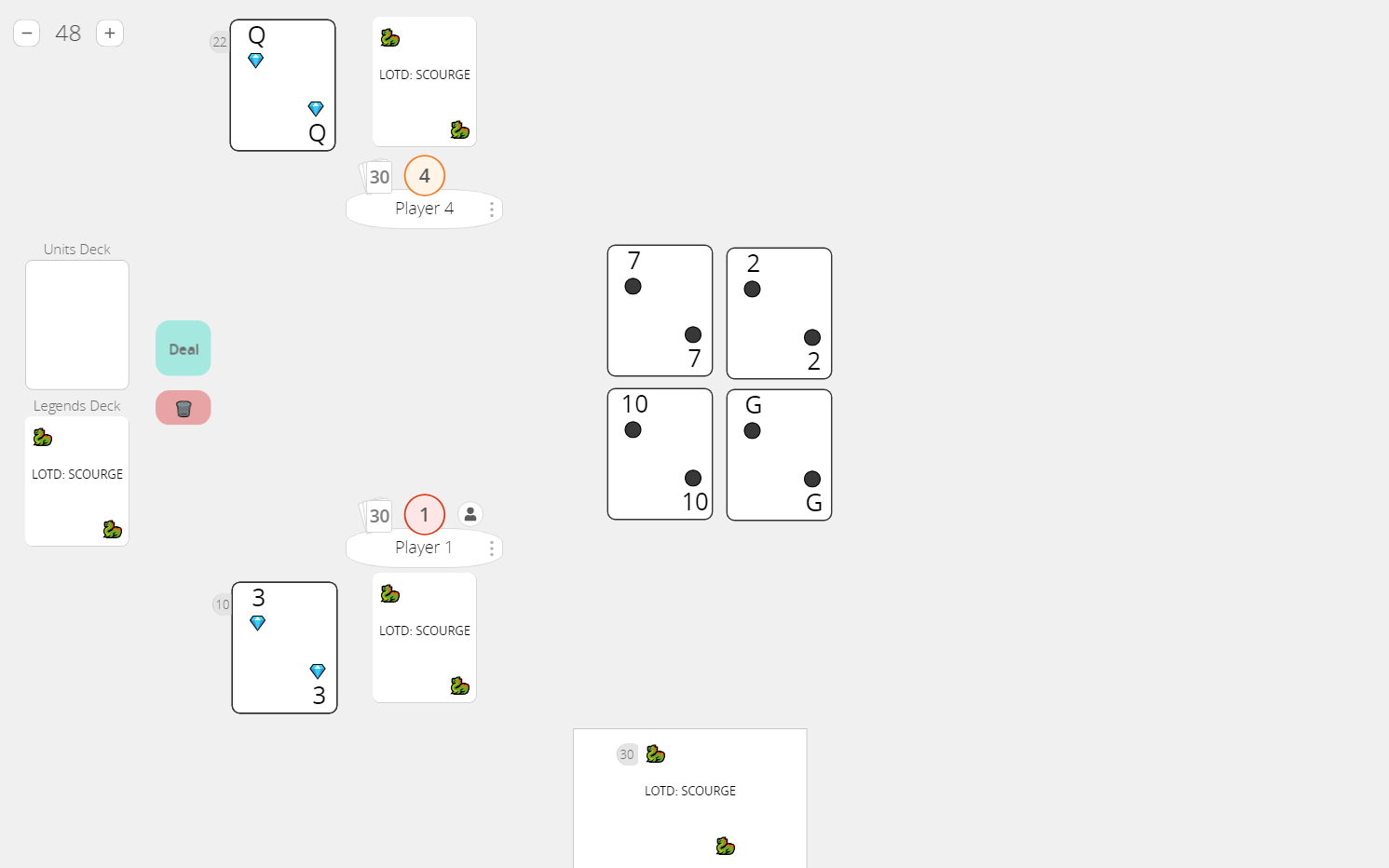
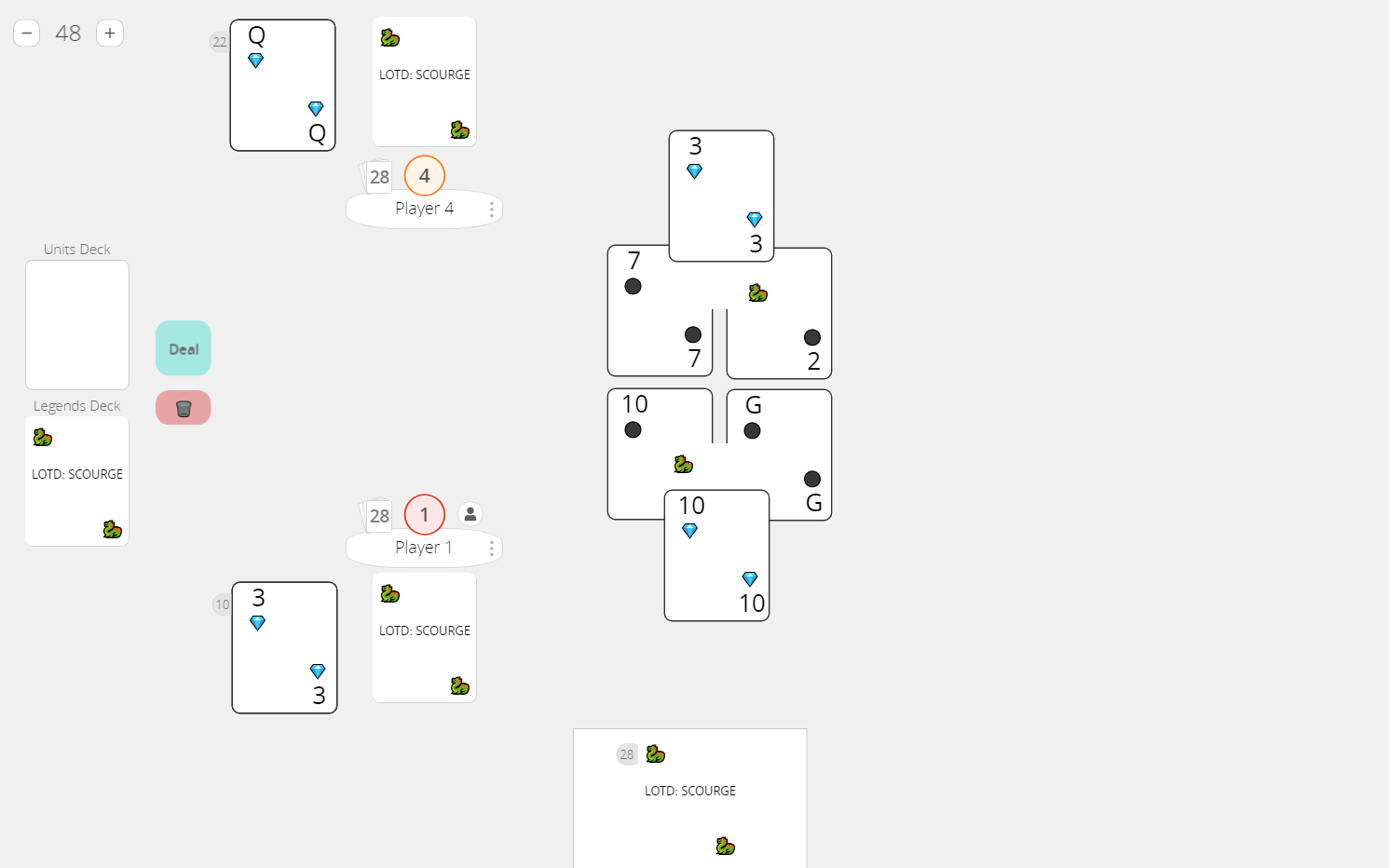
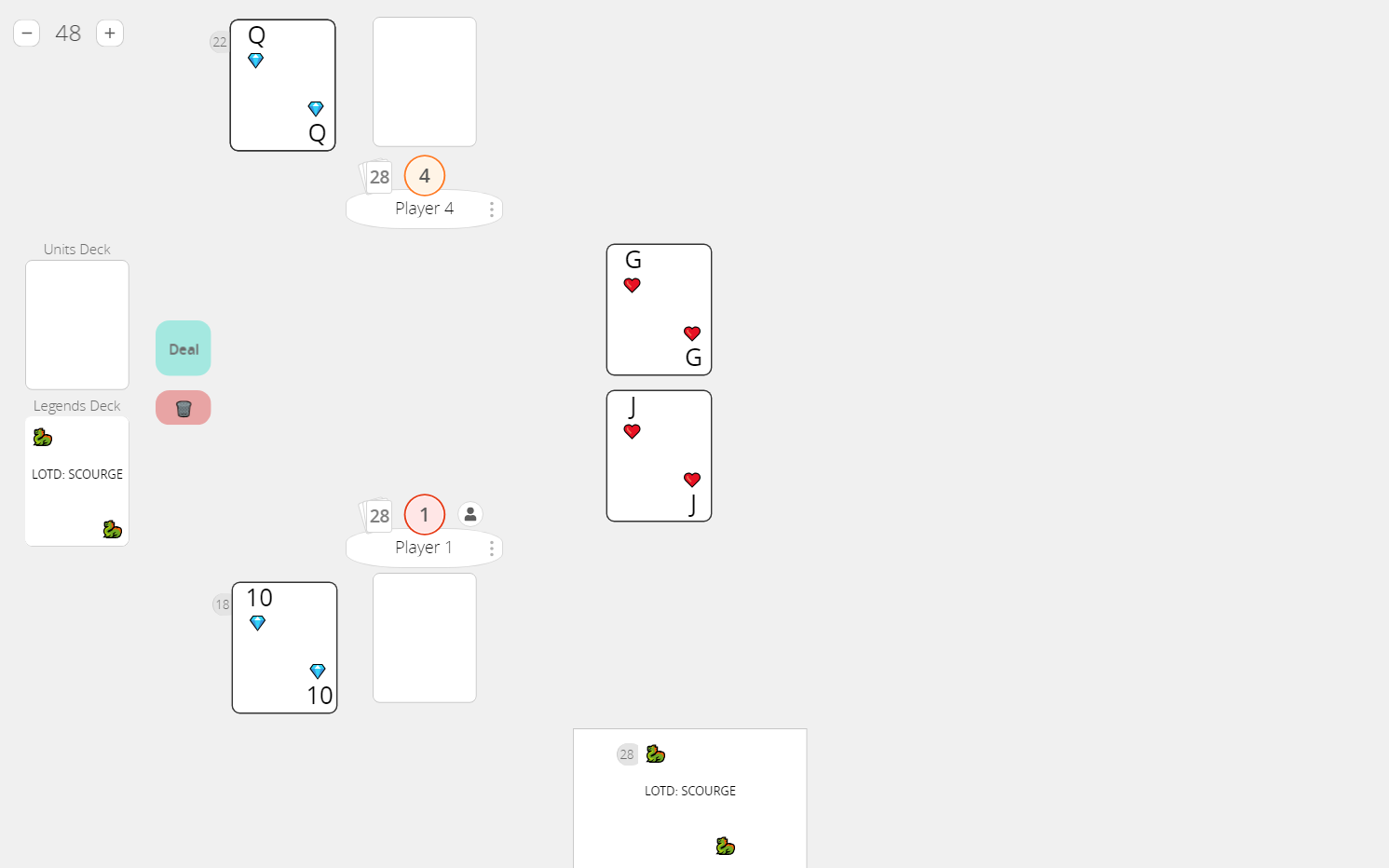
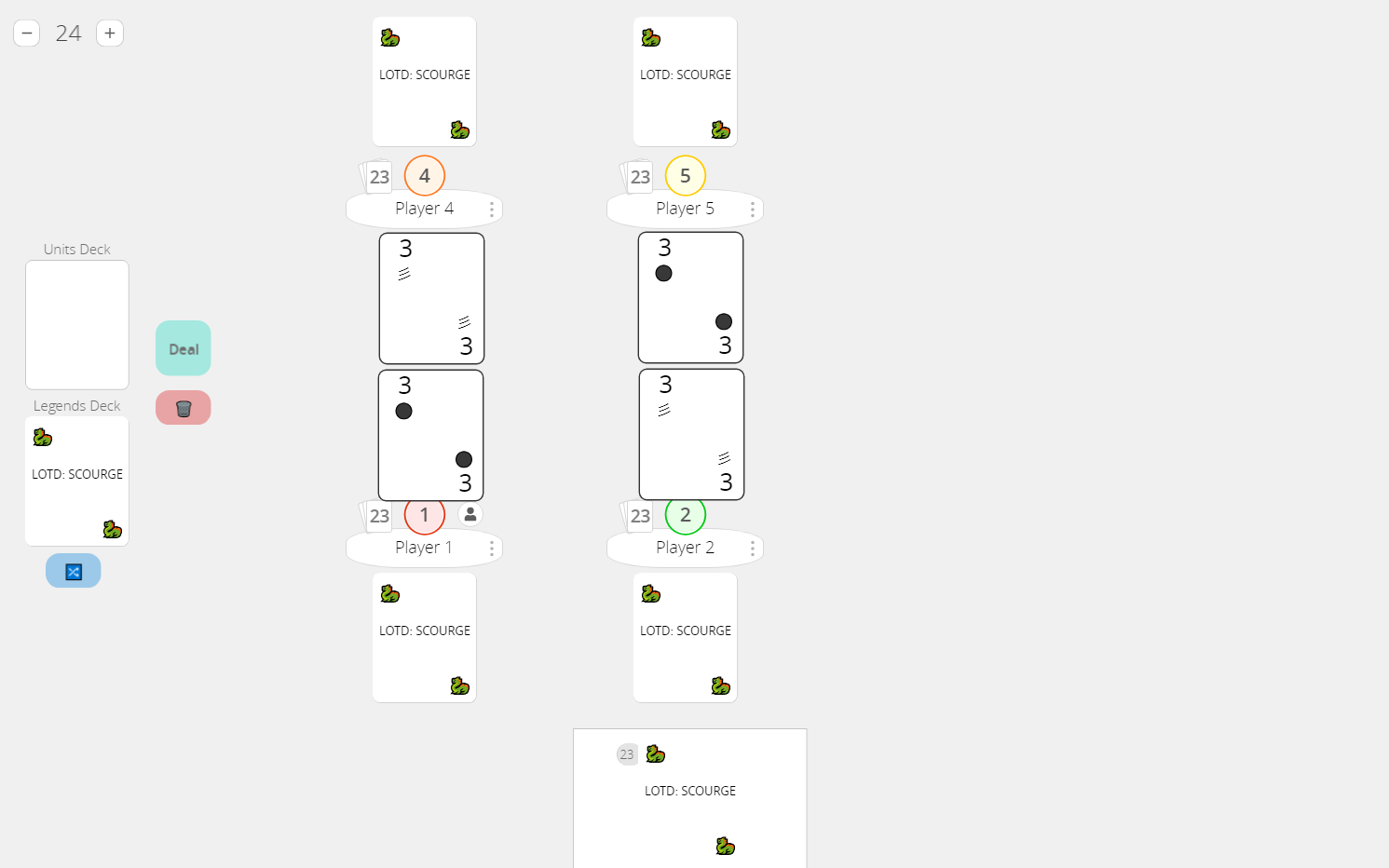
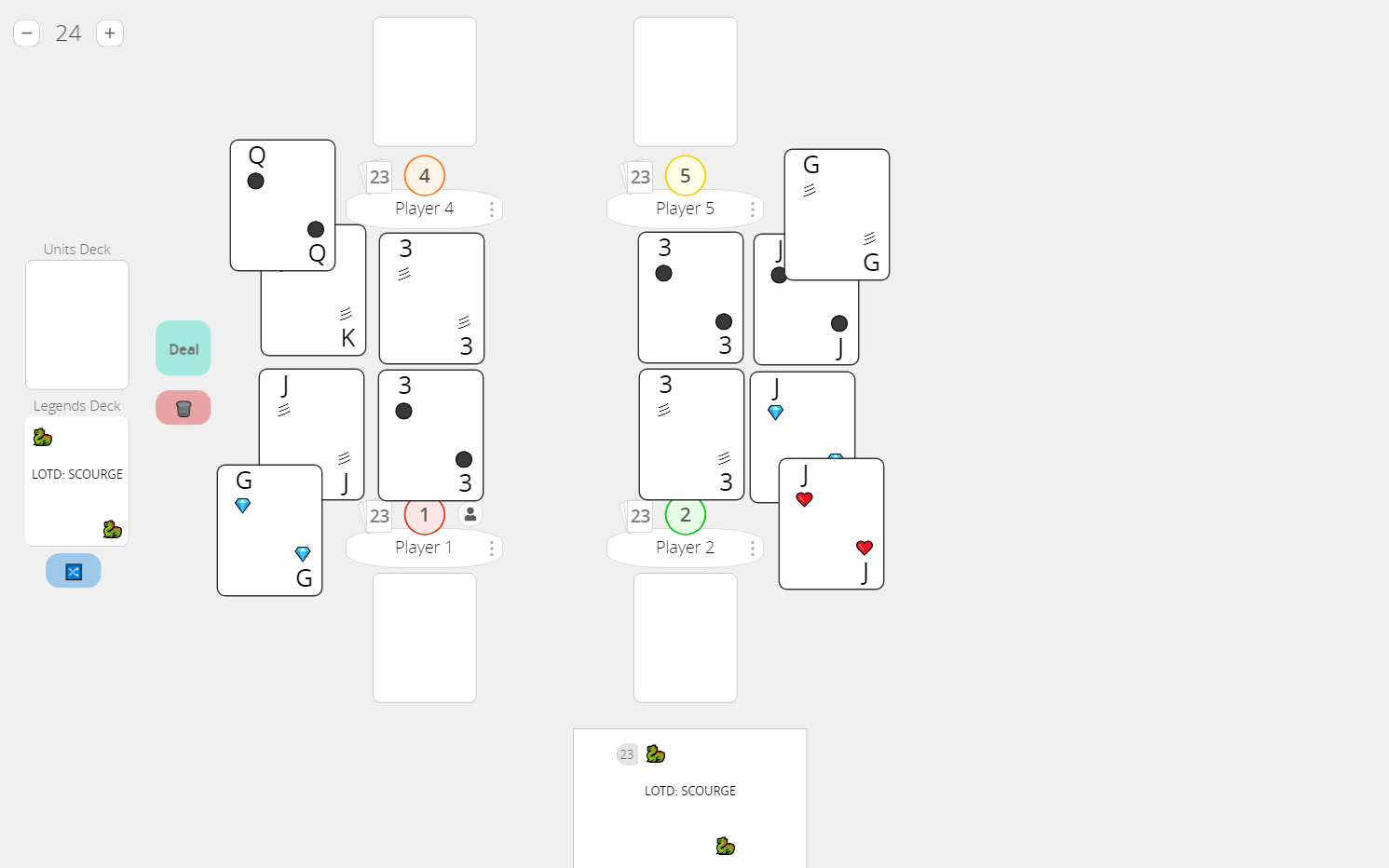
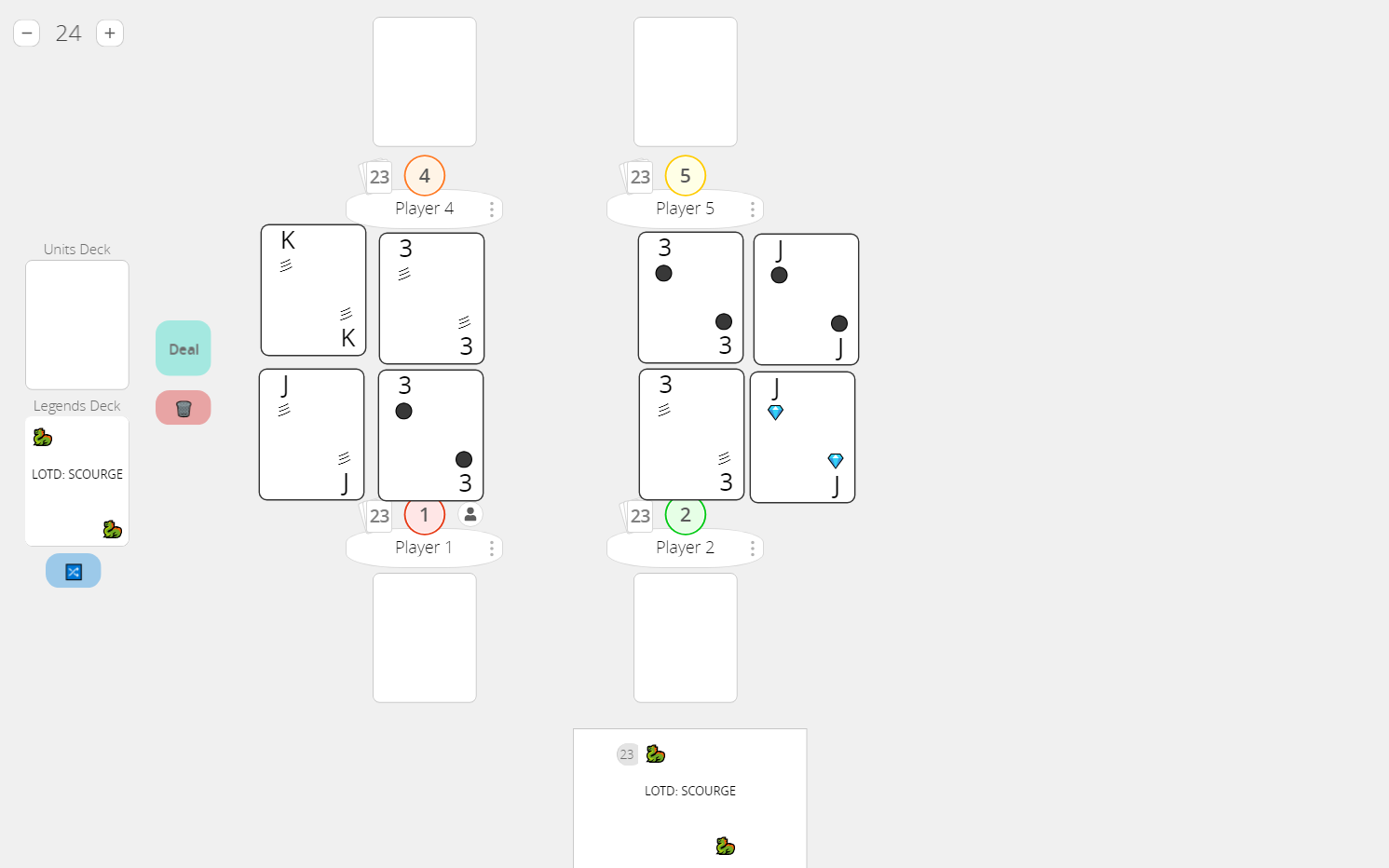
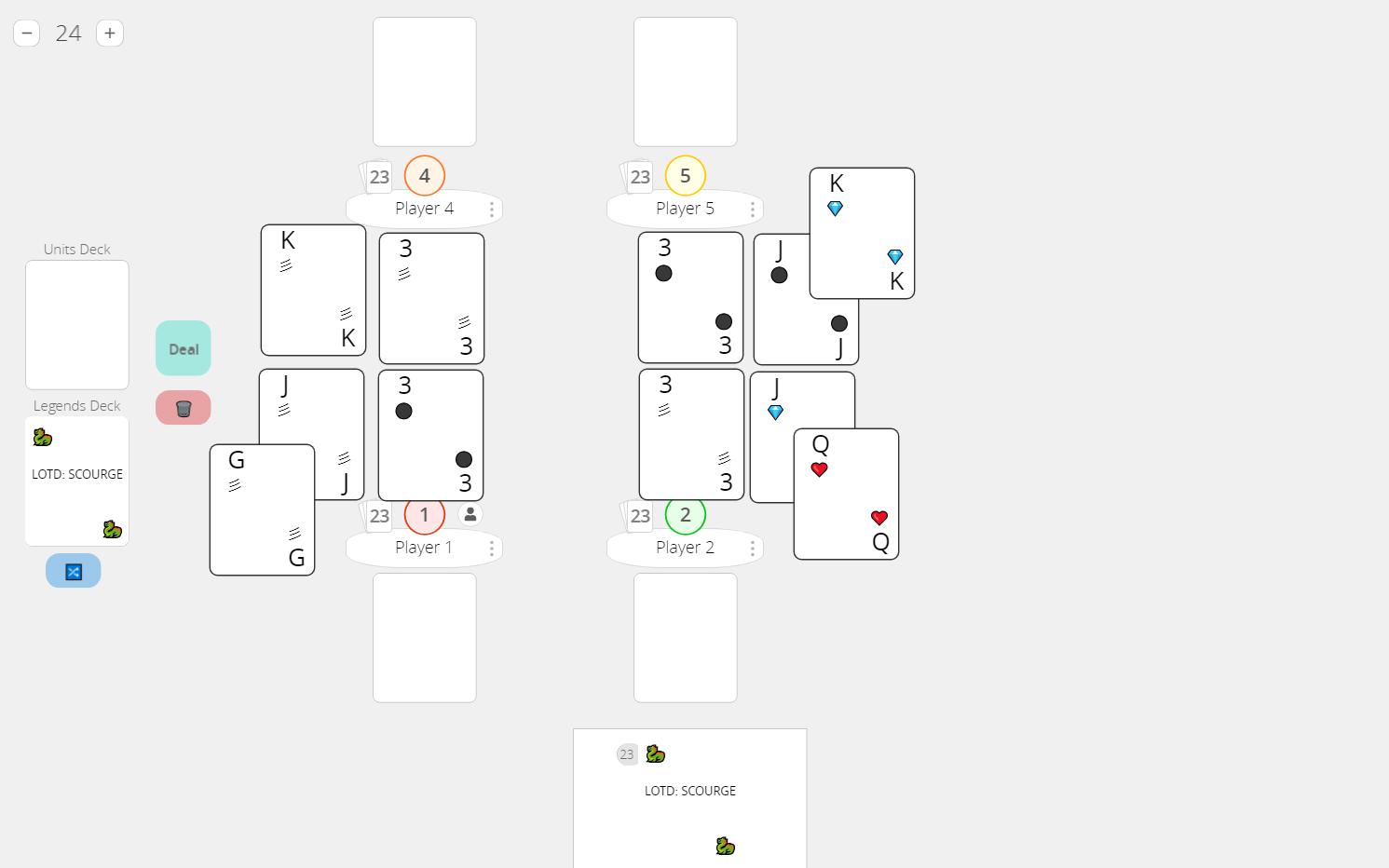
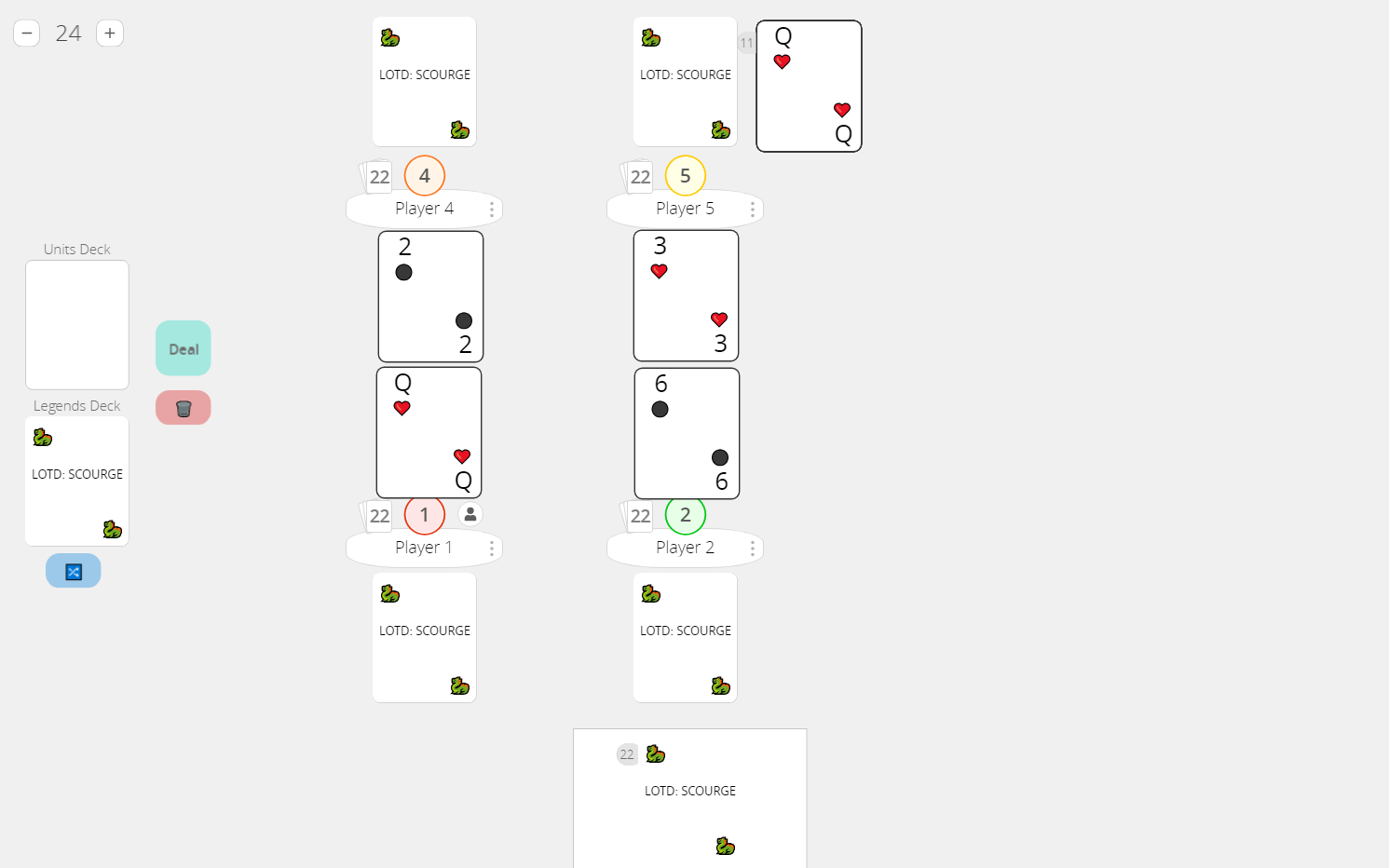
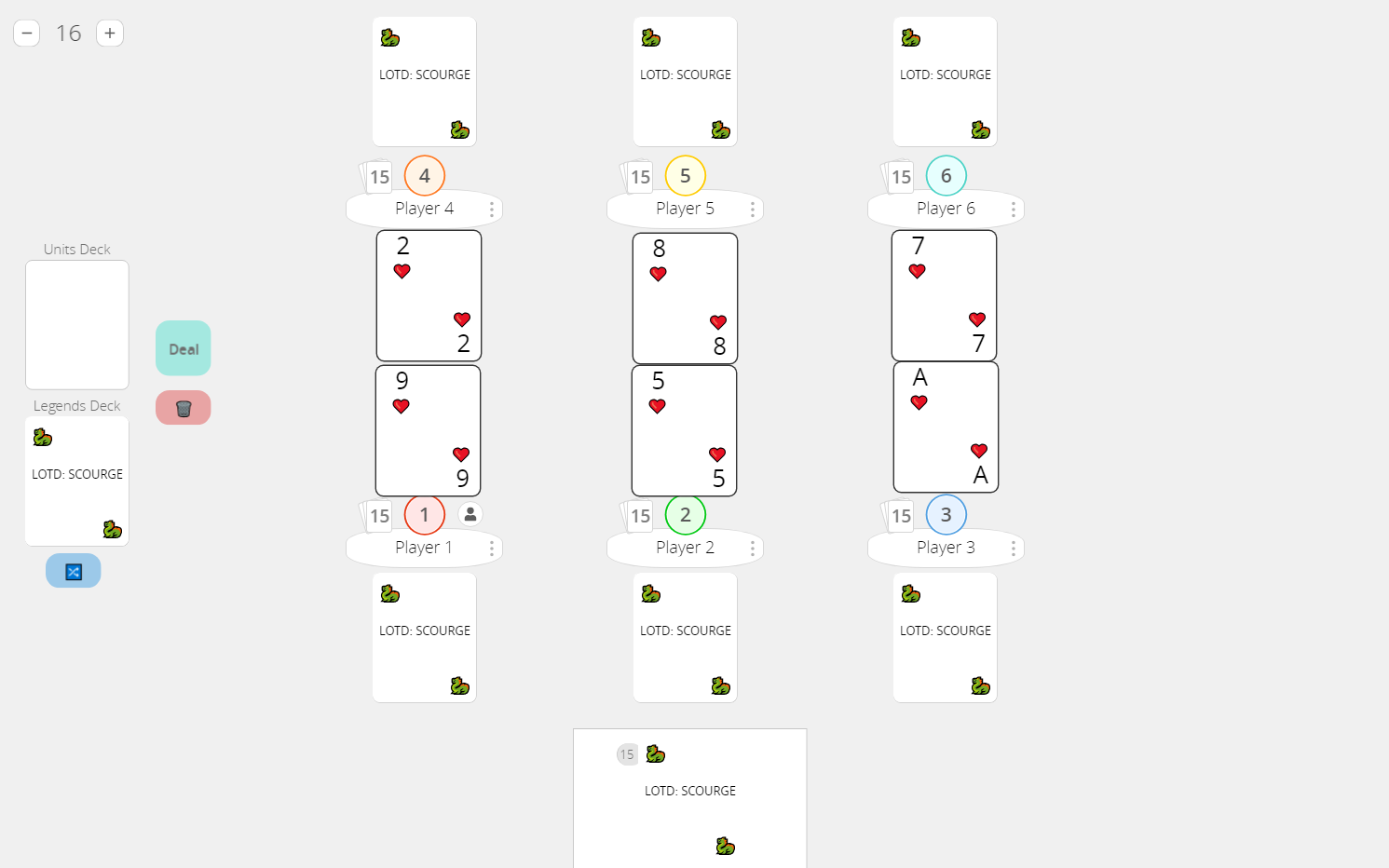
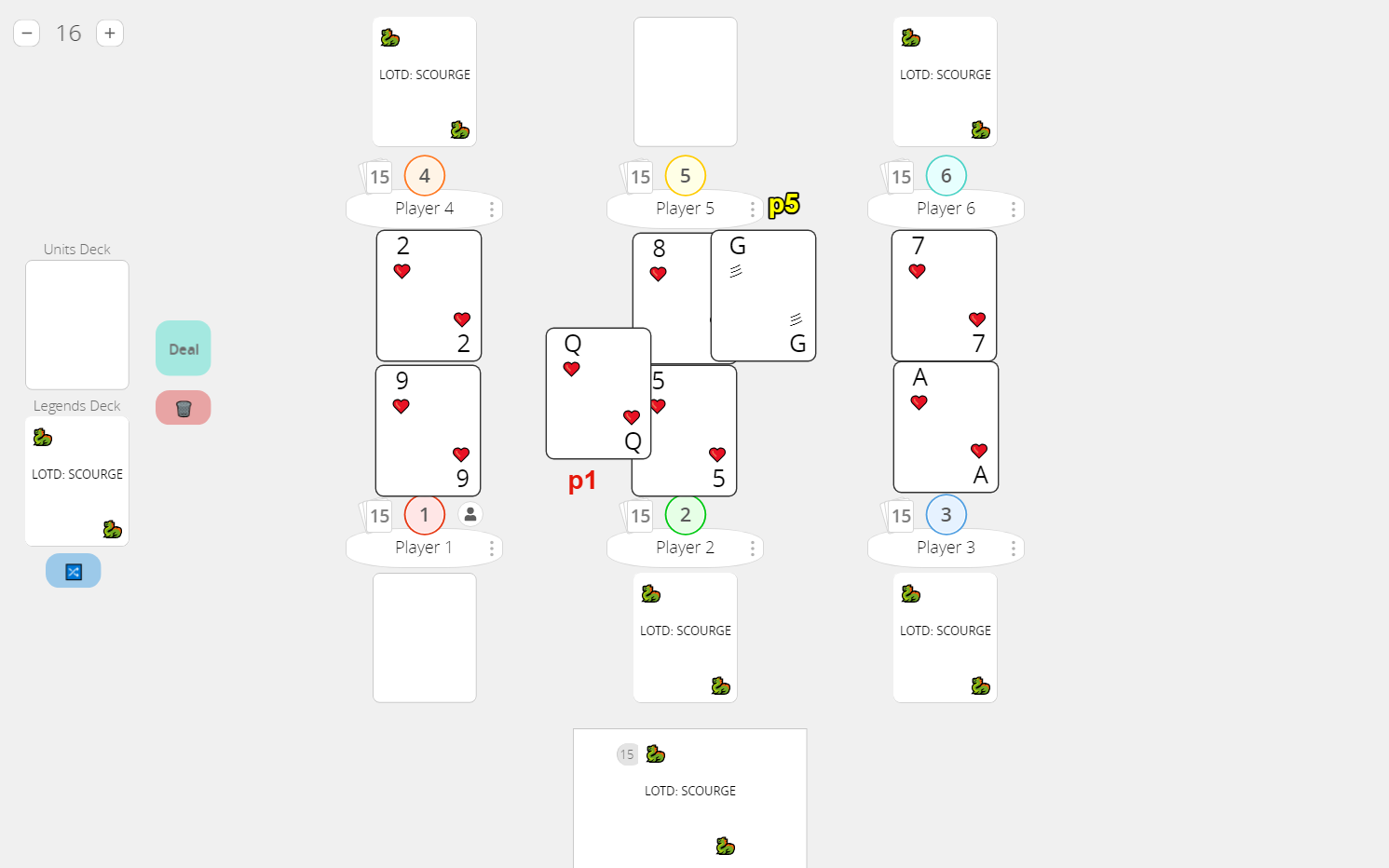
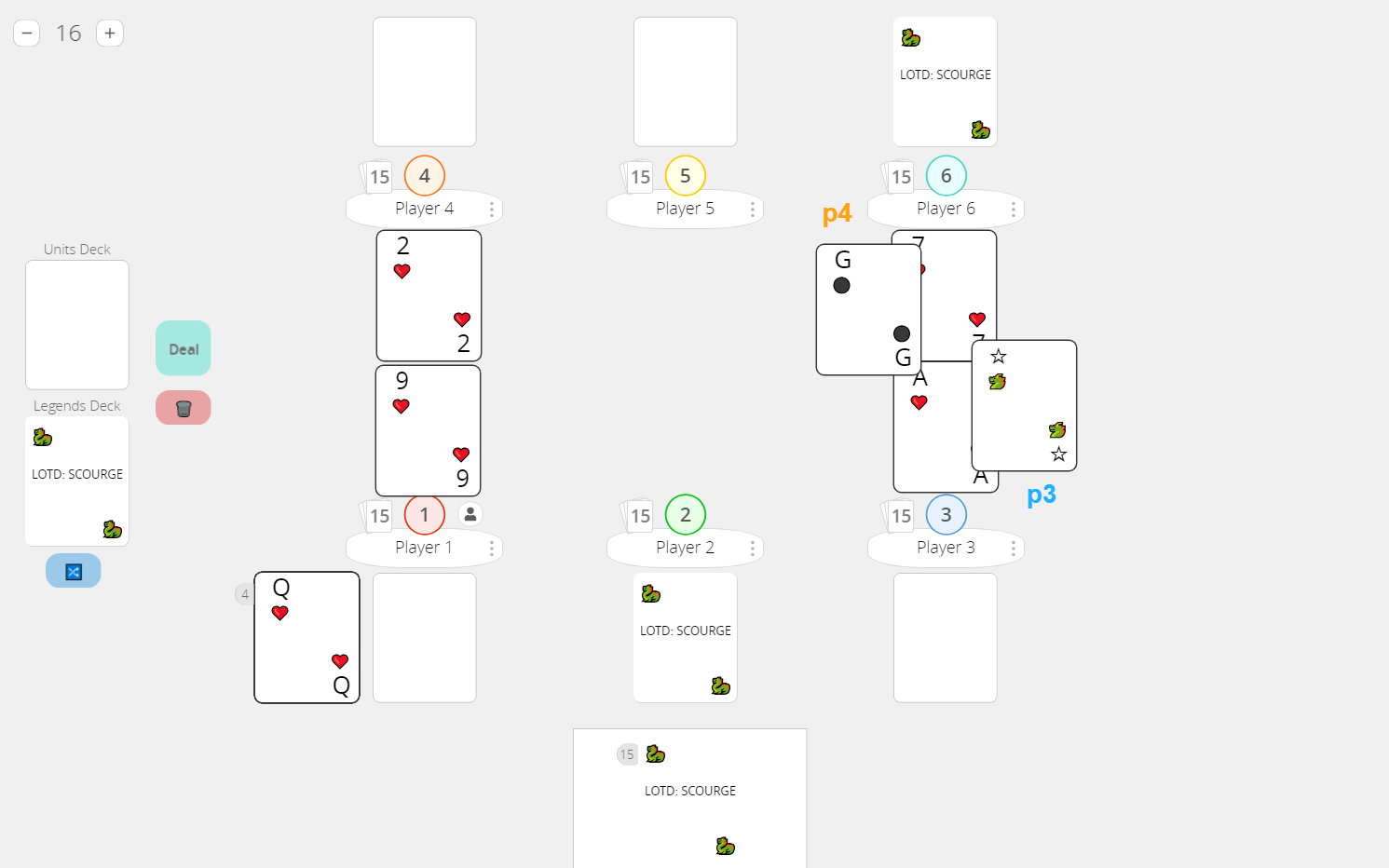
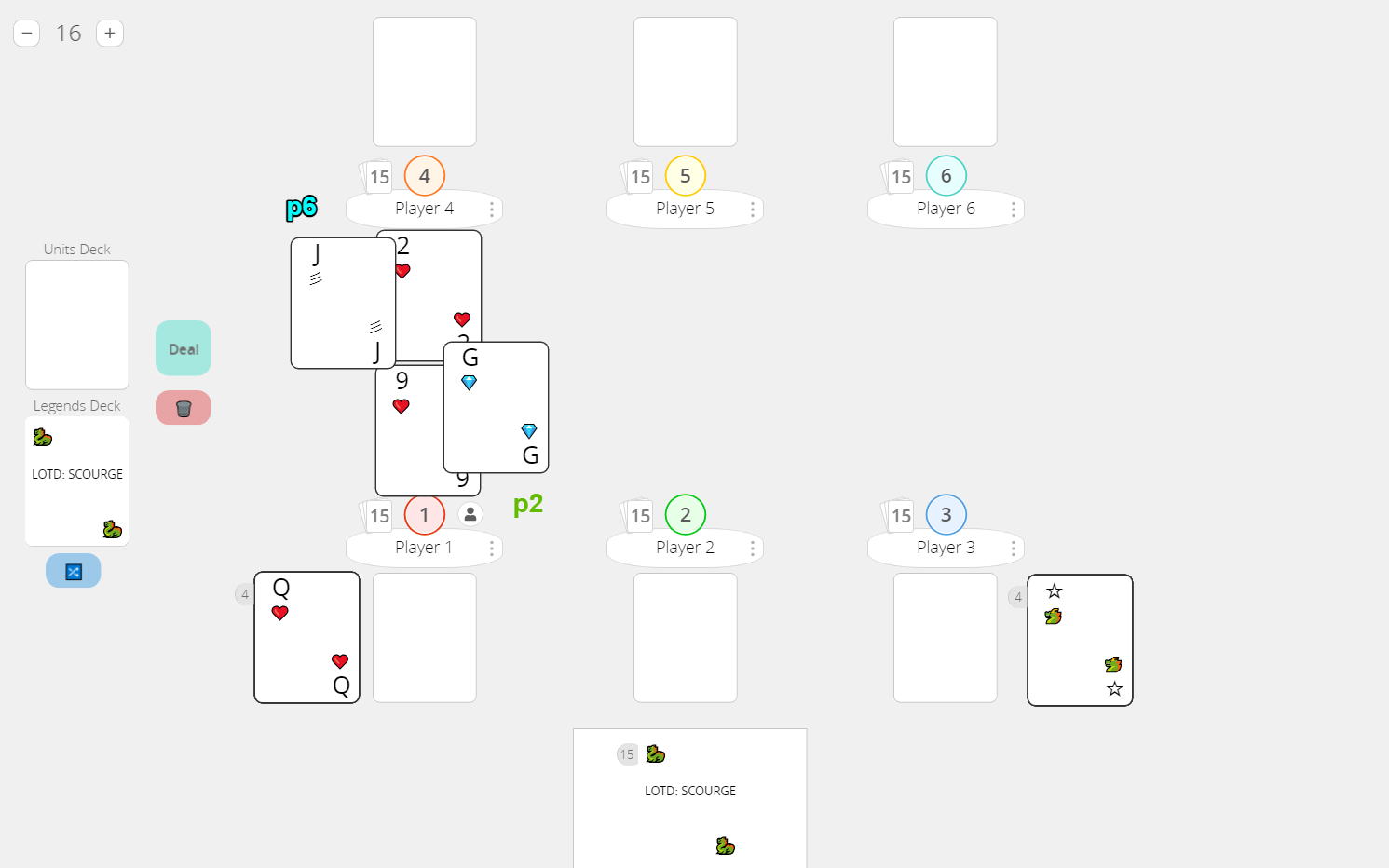
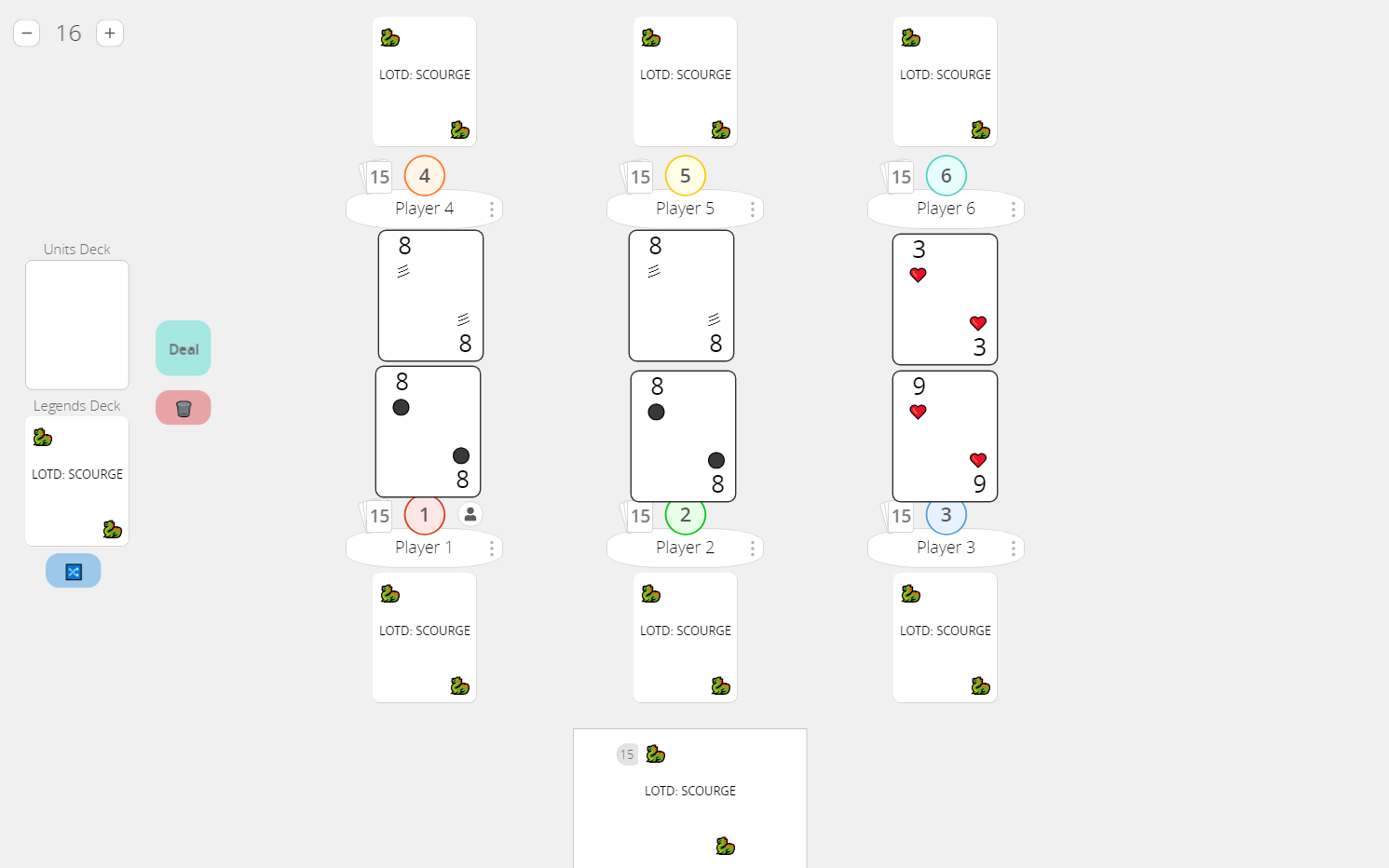
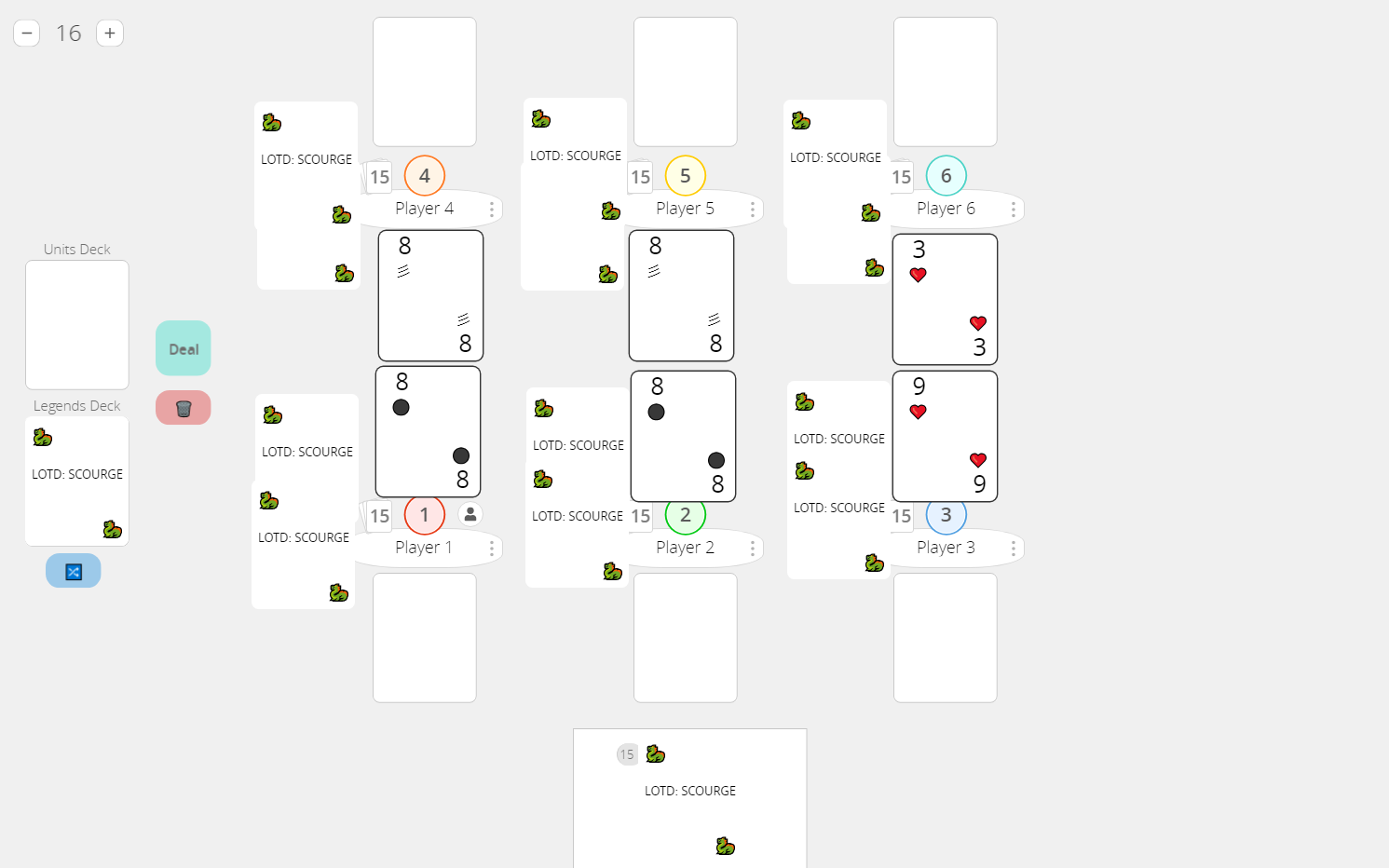
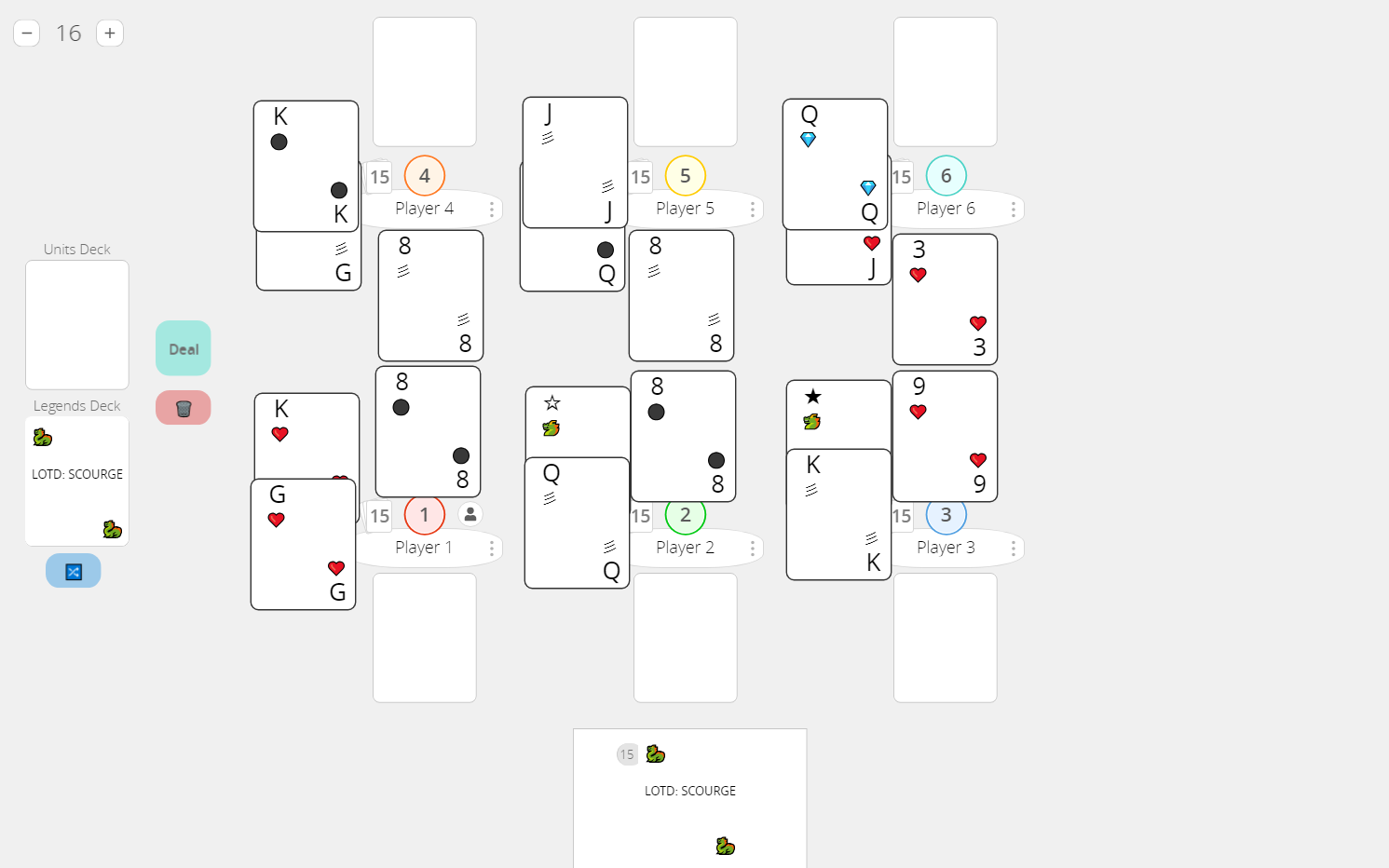








<3 Thanks for hosting the challenge!
> Root Directory is my hub world <
Legends of the Dragonguard • /dev/null
WorldEmber 2025